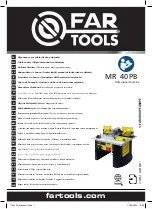
Chapter 4. Web Configuration & Operation
162
CHAPTER 3
WEB OPERATION & CONFIGURATION
DSCP:
By default, any is used. Select “Specific” to indicate a DSCP value. Select “Range” to indicate a range
of DSCP value.
IPv6:
Protocol:
IPv6 protocol includes Any, TCP, UDP, Other. If “TCP” or “UDP” is selected, you may need to
further define Sport (Source port number) and Dport (Destination port number).
SIP 32 LSB:
Select source IP type. By default, any is used. Select “Specific” to indicate self-defined source IP
and submask format.
DSCP:
By default, any is used. Select “Specific” to indicate a DSCP value. Select “Range” to indicate a range
of DSCP value.
Action Parameters
Specify the classification action taken on ingress frame if the parameters match the frame’s content. The actions taken
include the following:
CoS:
If a frame matches the QCE, it will be put in the queue corresponding to the specified QoS class or placed in a
queue based on basic classification rules.
DPL:
If a frame matches the QCE, the drop precedence level will be set to the selected value or left unchanged.
DSCP:
If a frame matches the QCE, the DSCP value will be set to the selected one.
3.23.12 Storm Control
Storm Control is used to keep a network from downgraded performance or a complete halt by setting up a threshold
for traffic like broadcast, unicast and multicast. When a device on the network is malfunctioning or application
programs are not well designed or properly configured, storms may occur and will degrade network performance or
even cause a complete halt. The network can be protected from storms by setting a threshold for specified traffic on
the device. Any specified packets exceeding the specified threshold will then be dropped.
Enable:
Enable Unicast storm, Multicast storm or Broadcast storm protection.
Rate (pps):
Select the packet threshold. The packets received exceed the selected value will be dropped.
















































